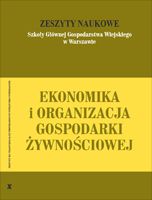Main Article Content
Article Details
Cassel, D. The growing shadow economy: Implications for stabilization policy. Intereconomics 19, 219–225 (1984). https://doi.org/10.1007/BF02928341
Dell’Anno, R., Gómez-Antonio, M. & Pardo, A. The shadow economy in three Mediterranean countries: France, Spain and Greece. A MIMIC approach. Empirical Economics 33, 51–84 (2007). https://doi.org/10.1007/s00181-006-0084-3
Gaspareniene, L., & Remeikiene, R. (2016). The Methodologies of Shadow Economy Estimation in the World and in Lithuania: Whether the Criterions Fixing Digital Shadow are Included? Procedia Economics and Finance, 39, 753–760. https://doi.org/10.1016/S2212-5671(16)30277-5
Joreskog, K. G., & Goldberger, A. S. (1975). Estimation of a Model with Multiple Indicators and Multiple Causes of a Single Latent Variable. Journal of the American Statistical Association, 70(351), 631–639. https://doi.org/10.2307/2285946
Schneider, Friedrich, and Dominik H. Enste. (2000) Shadow Economies: Size, Causes, and Consequences. Journal of Economic Literature, 38 (1): 77-114. https://doi.org/10.1257/jel.38.1.77
Teobaldelli, D. (2011). Federalism and the shadow economy. Public Choice, 146(3), 269–289. https://doi.org/10.1007/s11127-009-9590-0
Wiseman, Travis, U.S. Shadow Economies: A State-Level Study (March 1, 2013). Constitutional Political Economy, 2013, 24(4): 310-335. https://doi.org/10.2139/ssrn.2208637
Zellner, A. (1970). Estimation of Regression Relationships Containing Unobservable Independent Variables. International Economic Review, 11(3), 441–454. https://doi.org/10.2307/2525323
ADAM M.C., GINSBURGH V., 1985: The Effects of Irregular Markets on Macroeconomic Policy: Some Estimates for Belgium, European Economic Review 29(1), 15–33.
ANDERSEN T.M., HOLMSTRÖM B., HONKAPOHJA S., KORKMAN S., SÖDERSTRÖM H.T., VARTIAINEN J., 2007: The Nordic Model. Embracing Globalization and Sharing Risks, The Research Institute of the Finnish Economy (ETLA), Taloustieto Oy.
ARANDARENKO M., 2015: The Shadow Economy: Challenges to Economic and Social Policy, [in:] G. Krstič, F. Schneider (eds.) Formalizing the Shadow Economy in Serbia Policy Measures and Growth Effects, Springer, Cham Heidelberg, New York, Dordrecht, London.
BEEVOR A., 2013: Druga Wojna Światowa, Znak, Warszawa.
BILONIZHKO O., 2006: Measurement and Determinants of the Hidden Economy in Regions in Ukraine and Russia: MIMIC Approach, National University Kyiv-Mohyla Academy Economics Education and Research Consortium Master’s Program in Economics.
BRAUDE W., 2005: South Africa Country Analysis. Good Jobs, Bad Jobs, No Job: Labor Markets in Egypt, El Salvador, India, Russia and South Africa, [in:] T. Avirgan, J. Bivens and S. Gammage (eds.), Global Policy Network, Economic Policy Institute, Washington D.C.
BUSZKO A., 2019: Kulturowe uwarunkowania powstawania i funkcjonowania szarej strefy, Wydawnictwo Uniwersytetu Warmińsko-Mazurskiego w Olsztynie.
CZAPIŃSKI J., 2013: Kapitał społeczny, [w:] J. Czapiński, T. Panek (red.) Diagnoza społeczna 2013, Rada Monitoringu Społecznego, Warszawa.
FEIGE E.L., 1989: The Underground Economies, Tax Evasion and Information Distortion, Cambridge University Press, Cambridge.
GILES D.E.A., 1995: Measuring the Size of the Hidden Economy and the Tax Gap in New Zealand: An Econometric Analysis, Working Paper No. 5a. Working Paper on Monitoring the Health of the Tax System, Inland Revenue Department, Wellington.
LOS M., ZYBERTOWICZ A., 2000: Privatizing the Police-State: The Case of Poland, St Martin’s Press, New York.
SCHNEIDER F., 2013: Size and Development of the Shadow Economy of 31 European and 5 other OECD Countries from 2003 to 2012, Some New Facts.
SCHNEIDER F., BUEHN A., MONTENEGRO C.E., 2010: New Estimates for the Shadow Economies all over the World, International Economic Journal 24(4), 443–461.
SCHNEIDER F., ENSTE D., 2000: Schattenwirtschaft und Schwarzarbeit. Umfang, Ursachen, Wirkungen und wirtschaftspolitische Empfehlungen, Oldenbourg, München.
SCHNEIDER F., PÖLL G., 1999: Schattenwirtschaft in Handbuch der Wirtschaftsethik. In: W. Korff (ed.) Handbuch der Wirtschaftsethik. Güthersloh: Gütersloher Verlagshaus, 382–432.
Statistical Yearbook, 1992, GUS, Warszawa.
Statistical Yearbook, 2016, GUS, Warszawa.
TEDDS L., 1998: Measuring the Size of the Hidden Economy in Canada: a Latent Variable/ MIMIC Model Approach, Department of Economics, University of Victoria, Canada.
THOMAS J.J., 1992: Informal Economic Activity, LSE, Handbooks in Economics, London, Harvester Wheatsheaf. WULF G., WENIG A. (eds.), 1985: The Economics of the Shadow Economy, Springer, Berlin.
WÓJTOWICZ A., 2016: Zróżnicowanie rozwoju regionalnego w Polsce, Zeszyty Naukowe Polskiego Towarzystwa Ekonomicznego w Zielonej Górze 4, 302–311.
VOROBYEV P., 2015: Estimating Informal Share in Russian Regions, Working Paper No E15/02. Economic Education and Research Consortium.
Downloads
- Elwira Brodnicka, Rozwój polskiego winiarstwa w latach 2000–2017 , Zeszyty Naukowe SGGW - Ekonomika i Organizacja Gospodarki Żywnościowej: Nr 126 (2019)
Możesz również Rozpocznij zaawansowane wyszukiwanie podobieństw dla tego artykułu.





